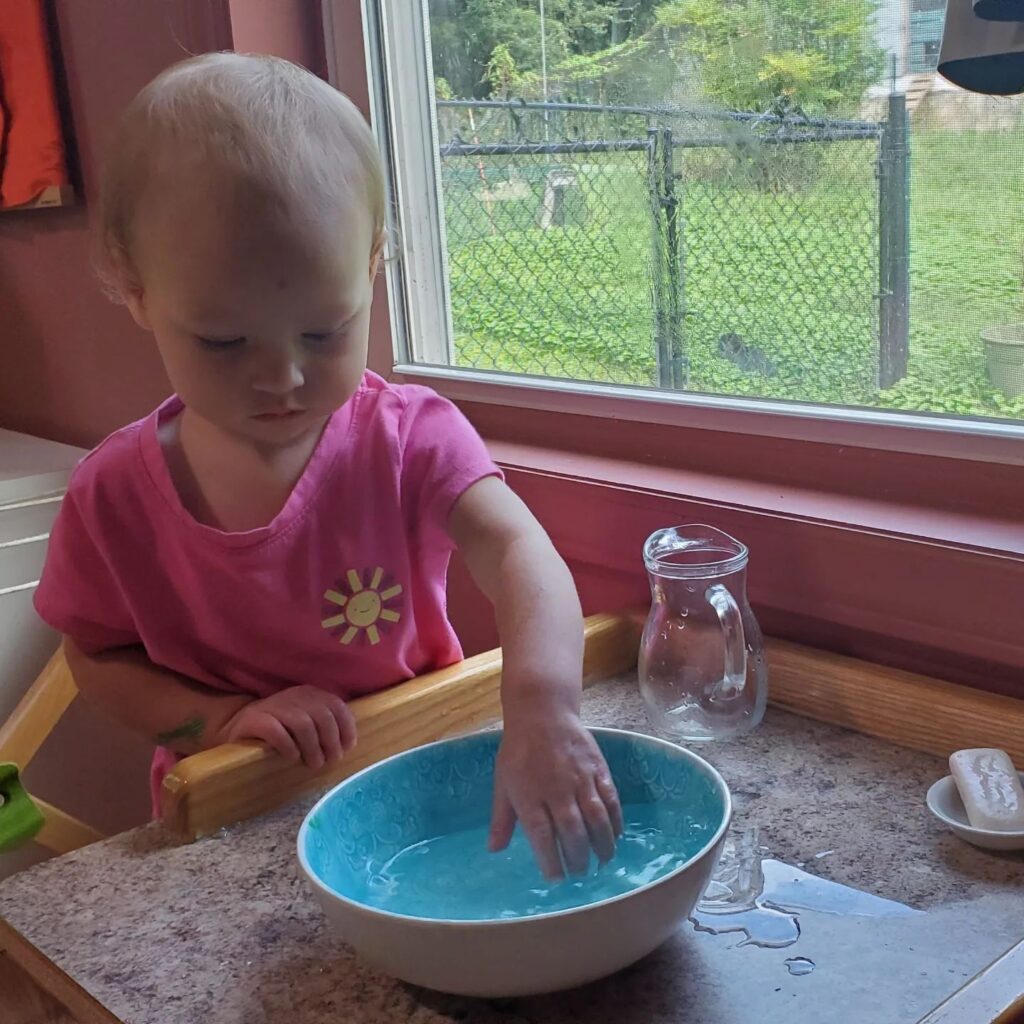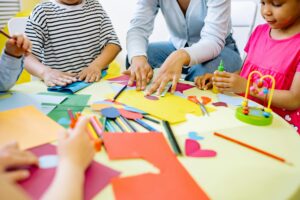Normalization is a Montessori term and something that every Montessori teacher strives for in their classroom. Maria Montessori came up with this term specifically because she wanted it known that this idea was available to ALL children. She likened it to the creation of oneself (character, personality, cognition) through the repetitive process of the freedom to choose, work, and rest via a “work cycle”. In the YMS classroom (toddler and primary and beyond) this looks like this:
Getting one’s work/activity: having the idea and knowing how to execute it.
This is why we strive to have everything the child needs readily available so the execution is achievable by themselves.
This might look like:
- Deciding to wash a table, getting the tray with the materials already on it
- Taking it to the table
- Getting the water pitcher and heading to the sink for water
- Returning to the table with water and pouring it into the correct dish
- Squeezing the sponge and getting the table wet
- Making bubbles with the scrub brush and soap
- Washing the table
- Removing the bubbles with the sponge
- Drying the table with the mitt or towel
- Putting that on the drying rack with a clothespin.
Then putting the work back on the shelf prepared for the next child. Yes, there are lots of steps (even more than are described here!) but, over time, the child has learned/absorbed them all.

Focus/concentration
The activity/work allows for and supports deep focus and concentration.
Rest
A feeling of positivity and satisfaction when integration of choice, movement, and positive experience occurs.
Repeat!
Normalization incorporates the child’s freedom to choose meaningful work with the coordination of movement, cognition to follow through on a task, and integration of skills. Normalization takes time to develop in a classroom and in the process we often see bits of it come and go as the children are presented with lessons and absorb the structure and routines of the classroom.
It is a process.
As teachers we often ask ourselves, “is the classroom normalized and if not, how can we continue to support it happening. If so, how can we continue to support it happening?”
This often involves discovering ways to support individual children to help them find their passion and groove in the classroom. Montessori is definitely a walk, not a sprint!

